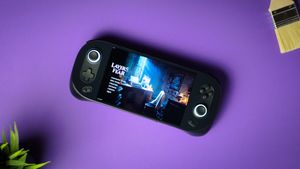Here's how the 2023 version of Layers of Fear from Bloober Team runs on the AYANEO 2S handheld.
Layers of Fear first spooked players back in 2016 and is now back with this more-than-a-remake 2023 take on things.
This new edition brings all of the main stories from the original game, along with all additional content and DLC, acting as something of a complete package for the now cult horror franchise.
We've taken a look at how this new take on the psychological modern-classic shapes up on the soon-to-be-released AYANEO 2s handheld — here's our technical review, and recommended settings to get it looking its best on the AYANEO portable (we've also taken a look at how Layers of Fear runs on Steam Deck).
How Layers of Fear runs on the AYANEO 2S
At 1200p, the 7840U chip of the AYANEO 2S truly shines. To our surprise, Layers of Fear runs relatively well on the device's native resolution. You often end up at 800p with newer titles, as this puts less strain on processing and requires less power.
You can increase the TDP quite a bit, but we recommend not to exceed 22W as it would result in significantly shorter battery life and louder fan noise. With these settings, you'll experience a stable 60 FPS with occasional drops into the mid-50s when entering new areas.
Recommended settings for Layers of Fear on AYANEO 2S:
| TDP | Game - 22W |
|---|---|
| Resolution | 1920x1200 |
| V-Sync | On |
| Frame Limit | 60 |
| Quality | Custom |
| Ray tracing | Off |
| TSR | Ultra Performance |
| View Distance | Medium |
| Anti-Aliasing | Medium |
| Textures | High |
| Shadows | Medium |
| Global Illumination | Medium |
| Reflections | Low |
| Effects | Medium |
| Post Processing | Low |
| Foilage | Low |
| Shading | Low |
Don't let TSR set to Ultra Performance irritate you, as we're playing at a fairly high resolution here. Furthermore, TSR does a better job than FSR in terms of reducing ghosting fuzziness and maintaining a steady frame pacing, whereas FSR tends to be faster but less visually pleasing.
Keep in mind that you can easily save additional battery life by simply capping the frame rate to 30 and lowering the TDP to 15W. Especially, since 30 FPS might be more than suitable for slower-paced games like Layers of Fear.
Blooper Team supplied a review copy of Layers of Fear for this technical review.
For more in-depth technical analysis and performance optimisations like this you can follow Timo Schmidt on his YouTube channel: Deckverse.




